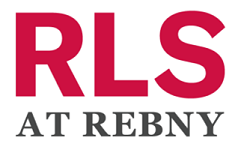Property Description « 日本語 Japanese 🇯🇵 »
| ID # | RLS20017789 |
| 物件の詳細 | 5 寝室, 4 バスルーム, 1 ハーフバス, 食器洗い機, 内装: 4863 ft2, 452m2 (DOM): 209 days |
| 建築年 | 1920 |
| 管理費 | $20,968 |
| 税金(年間) | $89,076 |
| 地下鉄 | 2 分: 6 |
| 4 分: B, D, F, M | |
| 6 分: R, W | |
| 8 分: J, Z | |
 |
Are you the listing agent? Sign up to add your name/photo/cell to your flyers. helpdesk@Samaki.com
房屋概況 Property Description « 日本語 Japanese 🇯🇵 »« ENGLISH »
ニューヨーク市にあるヴィンセント・ヴァン・デューセンによる唯一のプライベートレジデンス。
ノーホーで最も魅力的な通りに位置する54ボンドのペントハウスは、著名なベルギーのデザイナー、ヴィンセント・ヴァン・デューセンによって見事にキュレーションされています。屋内外の生活空間が6,000平方フィートを超えるこの思慮深い改装において、細部が疎かにされることはありません。
徹底的に conceptualized され、改装された内部の雰囲気は穏やかです。心地よく招待する空間を生み出す特定の素材の選択によって、独占的でありながら家庭的な感覚がもたらされます。フレンチオーク、砂吹き石灰岩のような天然石、加工されたカララ大理石が家全体に慎重に使用されており、すべての金属要素はダークブロンズで仕上げられ、他の表面との劇的なコントラストを生み出しています。
思慮深いアップグレードは目に見えるもの以上に広がっており、各階に新しい構造ビーム、新しいHVACシステム、28の大型防音窓が含まれています。建築照明、ヴァン・クローネンブルクのハードウェア、ボラの器具、印象的なカスタム家具やヴィンテージ家具は、家の厳密なデザイン基準を反映しており、ドモティカのスマートホームコントロールが手軽さと快適さを提供します。
4階にはこのプライベートレジデンスの主要な公共機能があります。メインホールからは、壮大なリビングエリアと図書館、家族のキッチンを結ぶ重要な視覚軸があり、全ての空間を豪華さを感じさせる没入型の空間体験として統合しています。南と東を向いた14の大型窓が特徴です。図書館は多機能スペースとして考えられ、隣接するエリアの延長として、快適で家庭的なプレイルームや、必要に応じてより形式的なダイニングエリアを作り出します。
5階にはプライベートゾーンと夜間ゾーンが全て収容されており、特にカシミアパネルのマスターベッドルームに重きを置いています。これは、寝室の異なるゾーンに続くバニティを備えたプライベートスイートとしてデザインされています。バスルームは空間における中心的な役割を引き受け、ドレッシングルーム、スチームシャワー、睡眠エリアを結びつけています。
最上階には屋上ラウンジがあり、建物の丁寧に修復されたファサードの後ろに位置し、屋外の覆われたテラスとスパエリアがあります。植栽デザインはペイト・アウドルフのランドスケープアーキテクトによるものです。自然石で作られた長い建築要素が異なるエリアを統一し、内部と外部の空間間に強い関係を作り出し、隠されたファイヤーピット、屋外・屋内のキッチンカウンター、ホットタブ、サウナを収容しています。2026年12月までの評価は月額$2,086.01です。
かつてオフ・ブロードウェイ劇場となった旧バウリー・レーン劇場は、1873年から1874年にかけて建設された、鋳鉄製のファサードを持つ元銀行の建物で、ヘンリー・エンゲルバートによってイタリア風のスタイルで設計されました。内部デザインは、この建物の重要な遺産を反映し、ファサードや開口部と外部の景色との強い関係を持つ一連の部屋を生み出しています。
The only private residence by Vincent Van Duysen in New York City.
Perched on the most coveted street in Noho, the Penthouse at 54 Bond has been masterfully curated by renowned Belgian designer Vincent Van Duysen. No detail goes untouched in this thoughtful renovation spanning over 6,000 square feet of indoor and outdoor living.
Meticulously conceptualized and renovated, the interior atmosphere is serene. It is created by a particular selection of materials that generate comfortable and inviting spaces, rendering an exclusive but homely feeling. French oak, natural stones like sandblasted limestone, and honed Carrara marble are thoughtfully used throughout the home, while all metal elements are executed in dark bronze, creating a dramatic contrast with other surfaces.
Thoughtful upgrades extend to more than what meets the eye, including new structural beams on each floor, new HVAC systems, and 28 oversized sound-attenuating windows. Architectural lighting, Van Cronenburg hardware, Vola fixtures, and an impressive array of custom and vintage furnishings nod to the home's exacting design standards, while Domotica smart home controls deliver effortless ease and comfort.
The fourth floor contains the main public functions of this private residence. From the main hall, an important visual axis connects the grand living area and the library with the family kitchen, creating a sense of grandeur and interconnecting all the spaces as an immersive spatial experience with 14 oversized windows with south and east exposures. The library was conceived as a multifunctional space; an extension of the adjacent areas, creating a comfortable and homey playroom or a more formal dining area if required.
The fifth floor accommodates all the private and night zones, with special emphasis given to the cashmere-paneled master bedroom, which is designed as a private suite with a vanity that continues in the different zones of the bedroom. The bathroom assumes the central role in the space, connecting the dressing rooms, steam showers, and sleeping area.
The top floor includes a rooftop lounge, located behind the building's meticulously restored façade, along with an outdoor covered terrace and a spa area. Planting design by Piet Oudolf landscape architect. A long architectural element in natural stone unifies the different areas, creating a strong relationship between interior and exterior spaces, and housing a concealed firepit, an outdoor and indoor kitchen counter and the hot tub and sauna. Assessment in place until December 2026 for $2,086.01/ month.
The former Bowery Lane Theatre, which became an Off-Broadway theatre, was originally a bank building with a cast-iron façade constructed from 1873 to 1874, designed by Henry Engelbert in the Italianate style. The interior design reflects this important legacy of the building, by generating a sequence of rooms with a strong relationship with the façade and the cadence of openings and exterior views.
This information is not verified for authenticity or accuracy and is not guaranteed and may not reflect all real estate activity in the market. ©2025 The Real Estate Board of New York, Inc., All rights reserved.
周边物业 Other properties in this area

$300万
約4億円

$400万
約5億円

$399万5
約5億円

$1060万
約15億円

$1459万
約21億円

$235万
約3億円

$235万
約3億円

 English
English






















